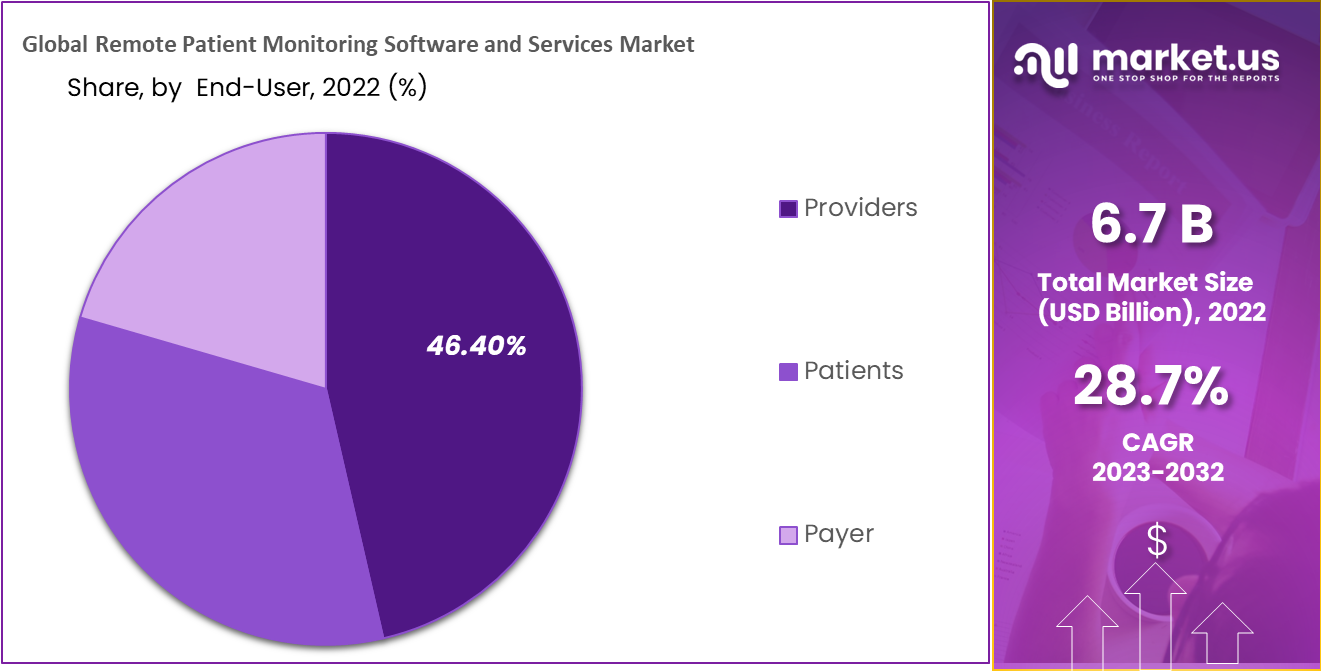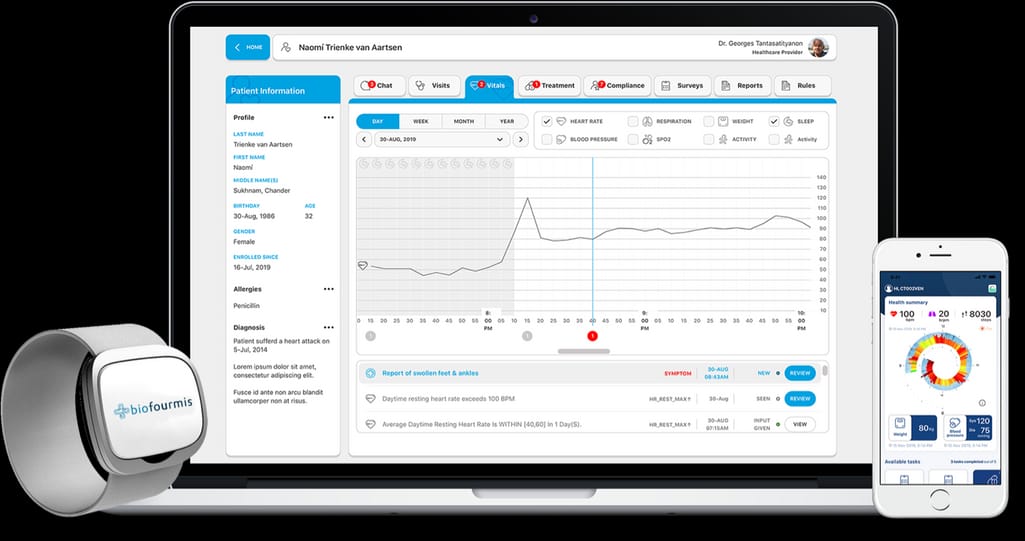Choosing the Best Remote Patient Monitoring Software: Key Considerations
Wiki Article
Revolutionize Healthcare With Remote Patient Monitoring Solutions
Remote patient tracking services have actually emerged as a transformative tool in this transforming atmosphere, providing an encouraging solution to lots of health care challenges. As we dive right into the complexities of remote individual surveillance services, it comes to be obvious that the effects get to far past comfort and effectiveness, forming a future where healthcare is extra proactive, individualized, and easily accessible.Advantages of Remote Patient Tracking
Remote Client Keeping track of deals a wide range of advantages in improving medical care shipment and patient outcomes - rpm software. One of the key benefits of remote person surveillance is the capability to give constant treatment beyond traditional healthcare setups. By remotely tracking vital indications, symptoms, and other wellness information in real-time, doctor can discover potential concerns early, resulting in timely treatments and improved health and wellness results for clientsFurthermore, remote client surveillance improves person interaction and empowerment. Clients come to be much more included in their treatment as they can actively get involved in monitoring their health and wellness and getting individualized responses from health care specialists. This increased involvement typically leads to much better adherence to treatment plans and a greater sense of control over one's health and wellness.
In addition, remote client tracking has been shown to reduce healthcare expenses by stopping unneeded medical facility readmissions, lessening emergency situation space visits, and maximizing resource utilization. By proactively taking care of chronic problems and identifying health and wellness issues early on, remote monitoring can aid stop expensive complications and improve total health care efficiency.
Influence On Healthcare Ease Of Access
Provided the shown advantages of remote client monitoring in enhancing individual outcomes and reducing health care prices, it is critical to discover its influence on healthcare availability. Remote individual surveillance solutions play a pivotal duty in boosting medical care ease of access by conquering geographical barriers.Additionally, remote client monitoring improves health care access by providing continuous monitoring and prompt interventions, reducing the demand for regular in-person visits. This not only saves time for both people and healthcare suppliers but also guarantees that individuals obtain timely care, resulting in enhanced wellness outcomes. Furthermore, by enabling medical care experts to from another location keep an eye on a larger variety of patients, remote person monitoring services aid in addressing the lack of doctor in specific areas, inevitably improving total healthcare accessibility for a wider populace.
Enhancing Person End Results
How can remote person surveillance services favorably affect person outcomes in the medical care landscape today? By allowing continual tracking of people' wellness metrics outside traditional medical care settings, remote patient surveillance services play an essential function in enhancing client results - remote patient monitoring software. Via the real-time tracking of crucial indicators, symptoms, and drug adherence, healthcare carriers can without delay change and interfere treatment strategies as needed, resulting in much better health and wellness resultsRemote client tracking also equips patients to take an extra active function in handling their wellness. By giving them with devices to track their progression and connect with healthcare providers from another location, people are much more engaged and motivated to comply with treatment routines. This raised individual involvement commonly leads to improved health and wellness results, lowered medical facility readmissions, and far better overall lifestyle.
Additionally, remote remote patient monitoring platform individual tracking permits for very early detection of prospective wellness complications, enabling prompt interventions that can prevent exacerbations of persistent problems or avoidable emergency clinic brows through. By helping with proactive and tailored treatment, remote client tracking services add substantially to boosting patient results and driving positive health care results.
Overcoming Execution Obstacles
To efficiently incorporate remote individual surveillance services into healthcare systems, organizations must address crucial application difficulties head-on. Among the key challenges is ensuring the interoperability of different tracking tools and systems with existing digital wellness record (EHR) platforms. Compatibility concerns can impede the seamless transmission of client information, jeopardizing the performance of remote surveillance. Furthermore, data safety and security and personal privacy problems present considerable obstacles. Health care service providers must comply with stringent laws to secure sensitive individual information sent with remote surveillance innovations.Additionally, resistance to alter amongst medical care specialists can impede the adoption of remote individual tracking solutions. Training programs and academic initiatives are important to familiarize personnel with the brand-new modern technologies and processes. Financial restrictions additionally present a hurdle, as preliminary financial investments in framework and innovation can be considerable. Organizations need to thoroughly assess the return on investment and long-term price savings related to remote monitoring to warrant the expense.
Future Trends in Remote Surveillance
Remote tracking modern technologies are poised to transform the healthcare market by boosting patient treatment and maximizing treatment results. Looking in advance, future fads in remote monitoring are expected to further change the means healthcare is delivered. One substantial trend is the assimilation of expert system (AI) and equipment understanding algorithms right into remote surveillance systems. These innovations can assess huge volumes of person information in real-time, giving health care providers with important insights and anticipating analytics to enhance decision-making and individualize patient care.This trend allows for aggressive and preventative healthcare interventions, leading to better monitoring of persistent conditions and very early discovery of possible health and wellness problems. Overall, the future of remote monitoring holds fantastic potential for advancing health care distribution and improving individual end results.

Final Thought
Finally, remote person tracking solutions have the prospective to reinvent medical care by enhancing client end results, increasing accessibility to care, and conquering execution difficulties. As technology remains to advance, the future fads in remote surveillance are promising, with the potential to even more improve health care delivery and individual care. Carrying out remote tracking solutions can cause a more effective and effective medical care system, inevitably profiting both patients and doctor.
Exactly how can remote person tracking solutions positively impact individual end results in the healthcare landscape today? By making it possible for constant tracking of individuals' health metrics outside traditional healthcare settings, remote person surveillance services play a critical function in boosting individual end results.In final thought, remote patient surveillance solutions have the possible to change medical care by boosting client end results, increasing accessibility to care, and getting rid of application obstacles.
Report this wiki page